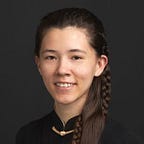The story of Modeling Religious Change
Four years of revolutionizing the demography of religion
Table of Contents:
1. Measuring (and predicting) religious change
2. Religion’s possible futures
3. Defining the dimensions of religiosity
4. Religious transformation in Norwegian media
5. Investigating education and religion in the U.S.
6. Ebbs and flows in American religiosity
7. The cohort-component method of demographic projection
8. Modeling religious change with agent-based models
9. The ARDEMIS web app
10. The path to MRC: Evolving computer simulations of religion
Measuring (and predicting) religious change
Modeling Religious Change is a collaborative project using artificial societies and demographic methods to better understand dimensions of religious identity and change around the world. Developing innovative models of secularization, synthesizing novel databases, and building a unique web-app for visualizing the inner workings of demographic projections, the MRC team has worked to advance the field of religious demography. Our novel databases and agent-based simulations mirror the real-life complexities of demographic projections and show how behavioral factors like religion can influence the output.
As the project comes to a close, we welcome you to read the story of the processes and accomplishments of MRC over the past four years.
Religion’s possible futures
Even before the project’s official beginning, our team and experts have been considering questions related to theories of religious change, secularization, and identity.
Why does religiosity decline in some places but not others?
Early computer modeling and simulations from our team revealed patterns to secularization in societies, including four main conditions needed for the emergence of a non-religious public.
Defining the dimensions of religiosity
What does it mean to be “religious?”
Before gathering data, we had to decide how we would define “religiosity.” Instead, we operationalized five dimensions of religiosity, enabling a cross-cultural, complex account of cultural and social differences related to religiosity across time.
Religious transformation in Norwegian media
Data for our dimensions of religiosity sometimes comes from unexpected sources to allow for a fuller picture of religiosity.
To gain insight on the religious practices of Norwegians, we studied engagement with religious media, in addition to traditional measures including prayer and church attendance.
Investigating education and religion in the US
Measuring multiple dimensions of religiosity enabled us to see how education affects different aspects of religiosity at different rates. Moreover, our research revealed that religiosity intersects with educational attainment in unexpected ways
Do young adults abandon their religious practices and beliefs during college, even if they were raised in religious communities which encouraged them to pursue higher levels of education?
Ebbs and flows in American religiosity
In addition to collecting data on multiple dimensions of religiosity, we also created novel datasets by combining pre-existing surveys, polls, and other data sources. This process required careful attention to survey-specific factors to achieve a clearer picture of the religious landscape of the past.
These databases form the foundation of our projections of future religious change.
The cohort-component method of demographic projection
The cohort-component method (CCM) is the current standard for creating demographic projections. However, CCM struggles to account for the multiple dimensions of religiosity we want to track.
Our goal is to provide proof-of-concept for a new method of demographic projection.
Modeling religious change with agent-based models
Our interdisciplinary team utilizes cutting-edge agent-based models (ABMs) to simulate religious change. ABMs simulate individual ‘agents,’ allowing us to account for personal characteristics, social networks, and complex personal change over time in our models of religious change.
The ARDEMIS web app
Demographic projections rely on many hidden assumptions, which can be represented by agent-based models.
The Assumption-Relative DEMographic Information System (ARDEMIS) is a web app which utilizes data from our compiled datasets and allows users to alter measurement and dataset assumptions. This interactive tool uncovers and visualizes the impact of assumptions on religious demographic projections.
The path to MRC: Evolving computer simulations of religion
The Center for Mind and Culture began conducting funded research on modeling religion in 2015, with the Modeling Religious Project (MRP) and continuing with MODRN the next year.
From its beginnings in MRP and MODRN to our planned future projects on religious change in China and religious cognition, the Center for Mind and Culture continues to revolutionize the demographic study of religion.
